What Is Your Brand Really Saying?
We’ve talked about what branding is and how to build strong roots. But here’s the next question every entrepreneur should ask: What is my brand actually saying to people?
Spoiler: It might not be what you think it is.
Your brand isn’t just what you say about yourself – it’s what your audience hears, feels, and remembers. Whether you’re aware of it or not, your business is always communicating something. The question is:are you being intentional about it?
This post is all about understanding and aligning your brand archetype, voice, tone, and messaging so your brand says exactly what you want it to.
YOUR BRAND VOICE: WHAT IT IS AND WHY IT MATTERS
Your brand voice is the personality of your business in written and spoken communication. It’s how your brand “talks”. Is it warm and friendly? Professional and informative? Witty and bold?
- A clear, consistent voice:
- Builds trust and credibility
- Makes your bran recognizable
- Helps you connect with your target audience
Examples:
- Nike: Bold, empowering, energetic
- Mailchimp: Quirky, clever, helpful
- Shopify: Practical, clear, supportive
Your voice shouldn’t change depending on the platform. Whether it’s a caption, a customer service reply, or your website copy, your voice should feel consistent.
TONE VS. VOICE: WHAT’S THE DIFFERENCE?
While your voice is consistent, your tone can shift depending on context.
Think of it this way: Your voice is who you are. Your tone is how you speak in a specific situation.
Example:
Let’s say your brand voice is friendly and conversational.
- Your tone when launching a product might be upbeat and exciting
- Your tone in a customer apology email would be softer and empathetic.
You’re still the same brand – just adjusting how you say things based on the moment.
UNDERSTANDING BRAND ARCHETYPES
One powerful way to make your brand voice and messaging more intentional is by identifying your brand archetype. Based on the work of Carl Jung, brand archetypes define universal character types that people inherently understand and relate to.
There are 12 common archetypes, including:
Brand Archetype Group: Leave Legacy
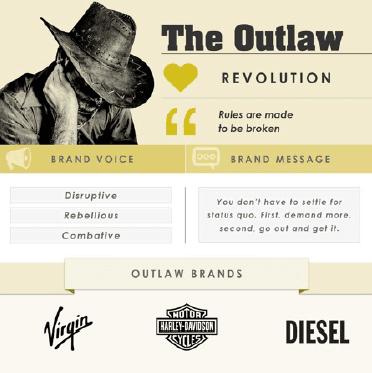
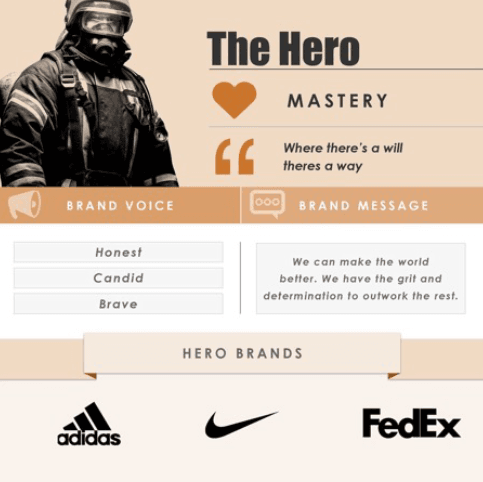
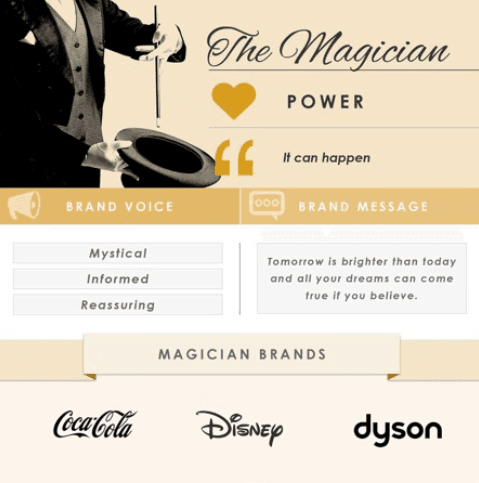
Brand Archetype Group: Pursue Connection
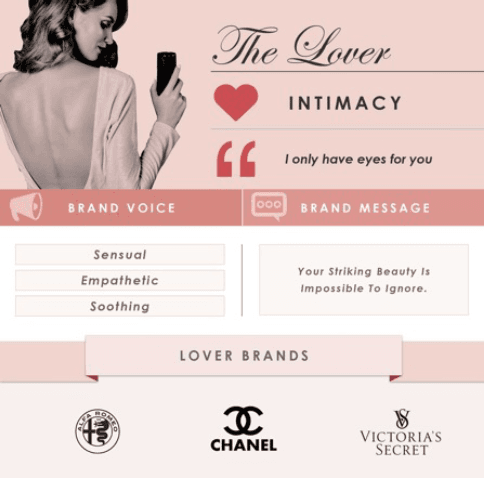
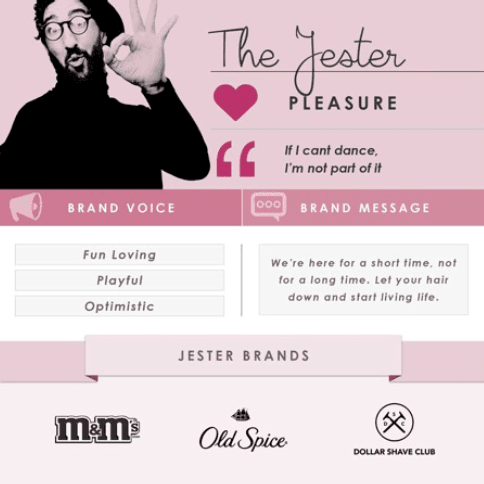
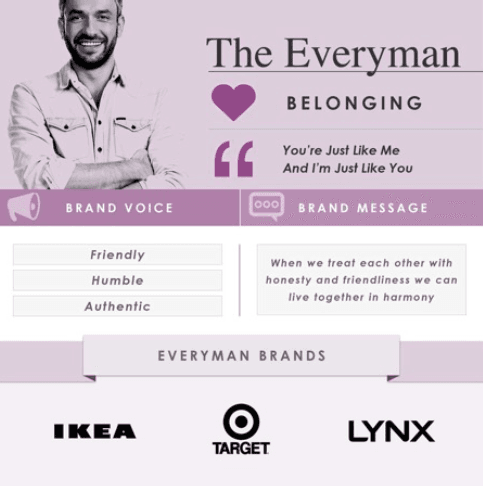
Brand Archetype Group: Provide Structure
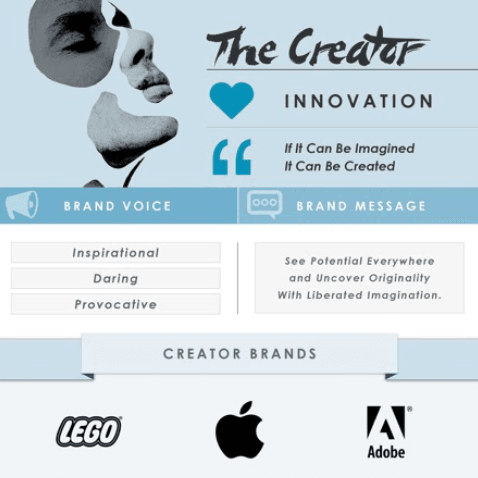
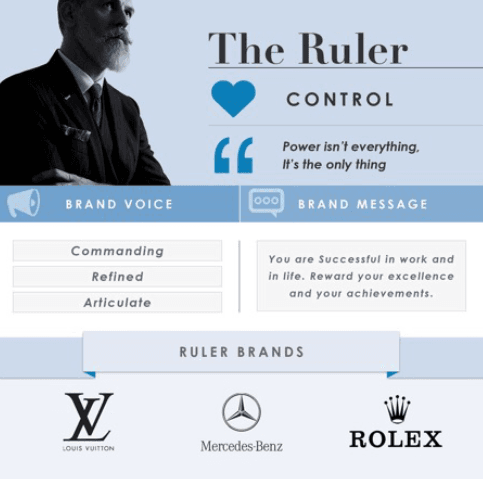
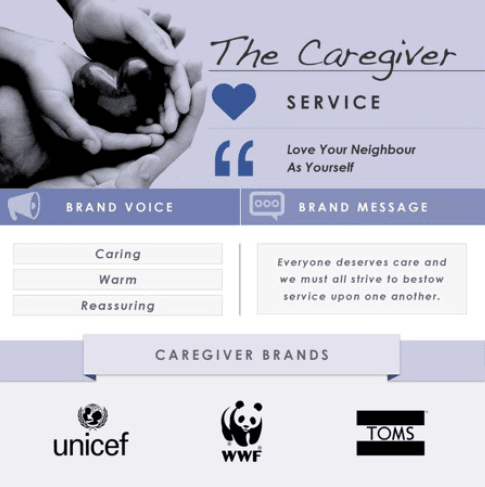
Brand Archetype Group: Explore Spirituality
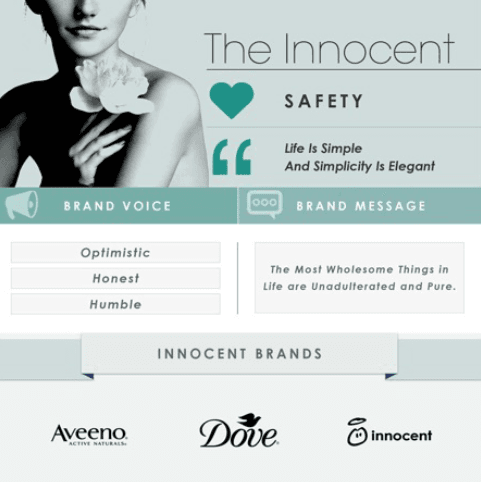
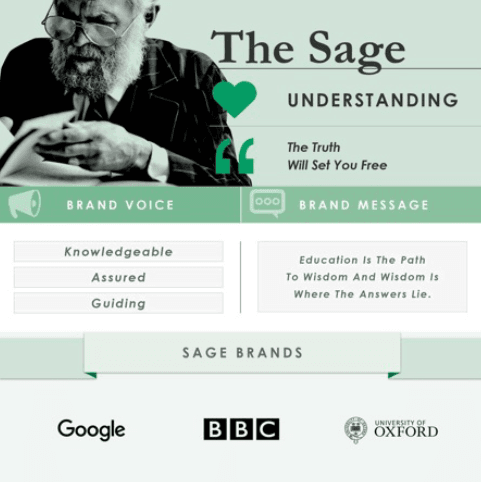
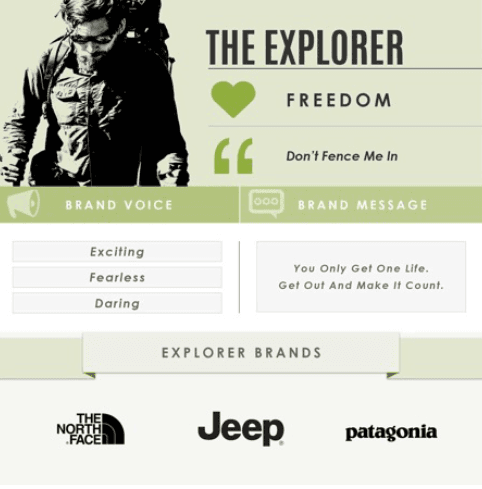
Identifying your brand’s archetype helps:
- Clarify your brand’s personality
- Influence your voice and tone
- Create emotionally resonate content
Ask yourself:
- Do we provide structure or spark inspiration?
- Are we helping people belong or stand out?
- Do we serve, empower, guide, entertain?
This clarity helps shape everything from your storytelling style to your choice of words.
WHAT MAKES YOUR BRAND MESSAGING EFFECTIVE?
Your brand includes your tagline, elevator pitch, website copy, social captions, product descriptions, and more. But great messaging isn’t just about clever words. It’s about clarity, relevance, and emotional connection.
Strong messaging should:
- Clearly communicate what you do and who you serve
- Reflect your voice and values
- Speak to you audience’s needs and desires
- Inspire action or trust
Ask yourself:
- Is my messaging easy to understand?
- Does it sound like my brand?
- Would my ideal customers feel like I “get” them
If the answer is no or “I’m not sure” it’s time to tighten things up.
BRAND ALIGNMENT: SAY WHAT YOU MEAN (AND MEAN WHAT YOU SAY)
Sometimes there’s a gap between how we want to sound and how we actually come across.
For example:
- You want to be seen as approachable, but your emails are cold and overly formal.
- You want to be bold, but your website copy is vague or generic
- You say you value innovation, but your messaging feels outdated.
Brand misalignment confuses customers and weakens trust.
How to fix it:
- Review your content across all platforms (website, social, email, etc.)
- Check for consistency in language, tone, and messaging
- Ask for honest feedback from team members or customers
- Use your archetype as a guidepost to keep your brand voice on track
WHY ARCHETYPE-DRIVEN STORYTELLING RESONATES
When your content matches your archetype, you activate emotional storytelling that connects. Storytelling can improve content engagement, and encourage your audience to return.
For example:
- A Jester brand like Dollar Shave Club uses humor to stand out and build loyalty.
- An Everman like Gap connects with broad audiences through inclusive messaging.
- A Lover brand like Alfa Romero uses passion and allure in their content.
Your archetype is the lens through which your brand “tell its story.” Use it.
Final Thoughts!
Your brand is always communicating. The question is whether that communication is helping or hurting your connection with your audience.
When your voice, tone, and messaging reflect your values and speak directly to your ideal customer, your brand becomes magnetic. You don’t have to chase people down – they feel like they already know you.
So, what is your brand really saying?
Next week, we’ll show you how to bring all of this together visually in our next post: “Beyond the Logo: Designing the Visual Identity That Matched Your Message.”
REFERENCES
- Keller, K. L. (2013). Strategic Brand Management: Building, Measuring, and Managing Brand Equity (4th ed.).
- Kotler, P., & Keller, K. L. (2016). Marketing Management (15th ed.). Pearson Education.
- Aaker, J. L. (1997). Dimensions of Brand Personality. Journal of Marketing Research, 34(3), 347–356.
- Mark, M., & Pearson, C. S. (2001). The Hero and the Outlaw: Building Extraordinary Brands Through the Power of Archetypes. McGraw-Hill.
- Harvard Business Review (2014). The Irresistible Power of Storytelling as a Strategic Business Tool.
- Lucidpress (2019). The Impact of Brand Consistency.




